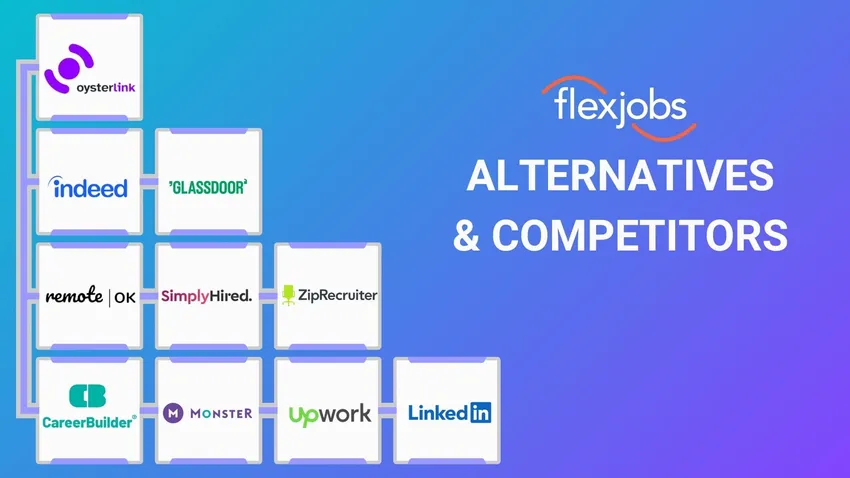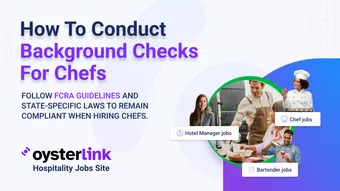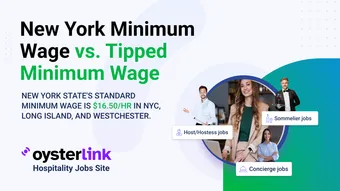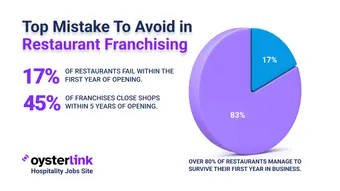FlexJobs Alternatives: 3 Key Takeaways
- With just 150,000 members, OysterLink provides a low-competition space for hospitality professionals.
- While Indeed attracts 300-500 million monthly visits, the high competition can make it harder for job posts to stand out.
- Glassdoor's pay-per-click pricing model can result in higher costs for employers.
FlexJobs alternatives offer specialized platforms and less competition, making job searches and posting more efficient.
Whether you're looking for remote work, hybrid positions, or industry-specific roles, these alternatives can provide more targeted opportunities.
What Is FlexJobs?
FlexJobs is a relatively large job board, especially if you’re looking for a freelance flexible gig.
They offer jobs in various areas, including IT, marketing and customer service.
Although they’re not specifically tailored for hospitality, you might be able to find limited opportunities on their website that include both remote, hybrid and on-site options.
When it comes to employers, the good news is that FlexJobs offers a couple of membership tiers.
You can also try them out for a fraction of the cost (less than $3 for a two-week trial), before deciding to purchase.
At the time of writing this article, the monthly cost is just under $24.
If you’re looking to save a couple of bucks, bear in mind their yearly membership is $60.
Best Alternatives to FlexJobs
OysterLink
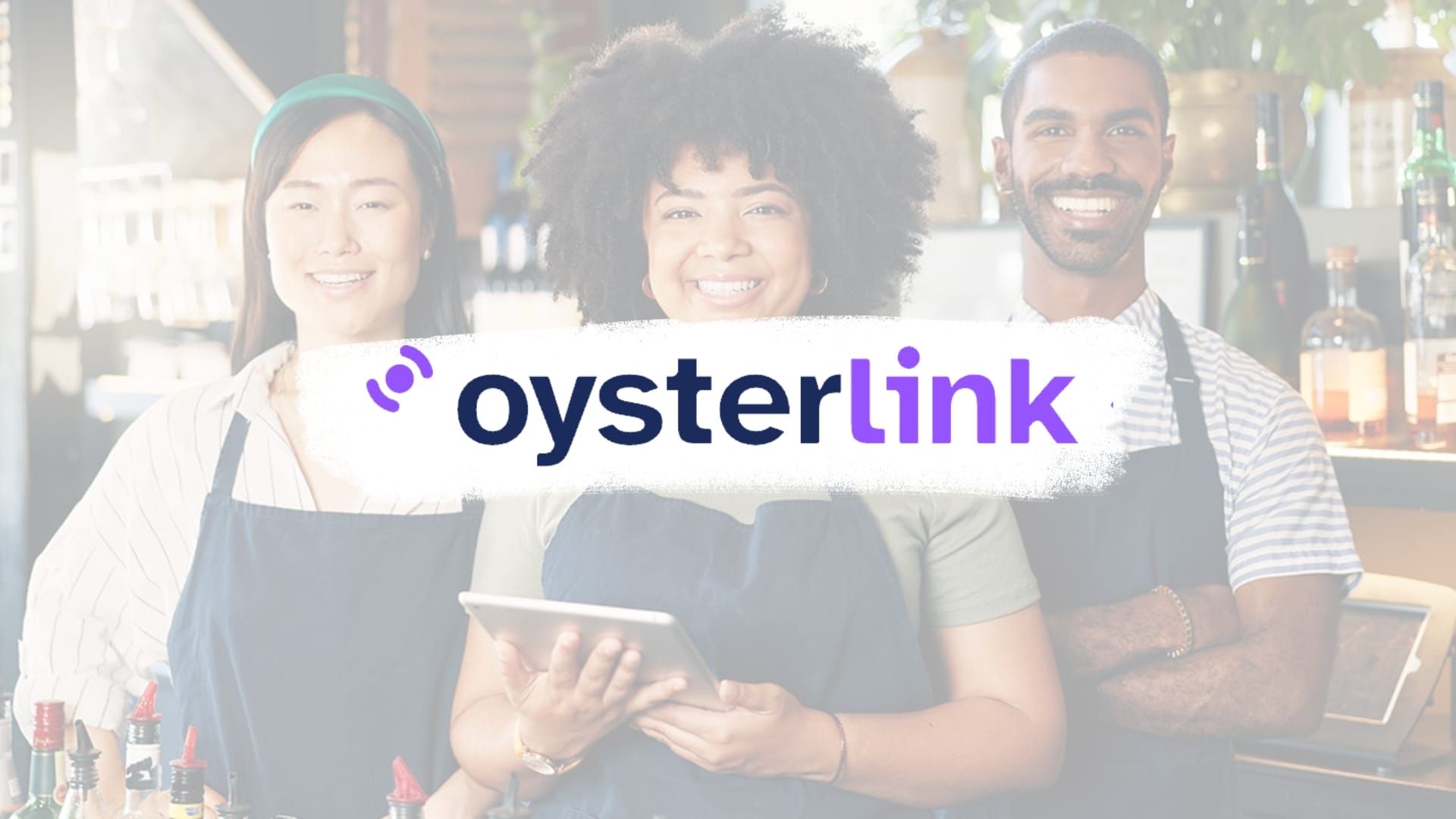
In less than a year, OysterLink has quickly emerged as one of the leading hiring platforms for hospitality workers in the U.S.
They focus on connecting employers with high-quality job seekers offering a variety of the most popular service jobs on the market.
For Employers
Unlike other platforms that charge hundreds to thousands of dollars to post a single job, OysterLink offers job postings for just $150 per listing.
You’ll also get access to over 100 customizable job descriptions on the platform, so you don’t have to worry about what to write - you can focus on finding the right candidate.
Another great feature that they offer is the hospitality industry reports and guides.
Apart from the latest trends and insights, you can also check out interview guides for various positions.
For Job Seekers
Given that OysterLink is not a platform with millions of members, the competition is not fierce.
Instead, you’ll be in a poll of 150,000 other high-quality applicants who’ve just discovered this new marketplace.
This means that your chances of getting hired are automatically higher if you use their website to apply.
When it comes to resources, OysterLink offers a detailed breakdown of important aspects such as career outlook and progression as well as salaries for all hospitality positions.
If you’re curious to find out exactly how much money you will be taking home, you can reference their paycheck calculator or read more about the U.S. state labor laws.
Pros:
- Free-to-download job descriptions
- Exclusive interview guides
- Fair competition
- Useful resources (career progression, paycheck calculator, etc.)
Cons:
- Has a smaller user base compared to larger platforms
Indeed

Indeed is one of the most recognized hiring platforms in the world.
However, despite its multi-million user base and numerous jobs published, there are still some downsides to it.
For Employers
As one of the most popular job sites on the internet, Indeed gets 300 — 500 million visits each month.
While that does indicate there’s a large following, it can also be quite difficult to get your job posts to be seen (especially if you opt for the free listing).
A better choice would be to post a job and then sponsor it.
Indeed can charge you anything from $5 to $150 per day per post, however, you get to set the daily budget.
That way, your job will stay on top until your drain your budget.
However, you’ll have to restart the entire process once again after 30 days.
For Job Seekers
As a job seeker, you’ll have to sift through hundreds of jobs on Indeed until you find the right one.
In addition to Indeed being extremely competitive, there are also multiple inactive or fake job listings that can make your search more tedious.
However, as a job seeker, you also get to use Indeed completely free of charge.
Once you create a profile, you’ll be able to narrow down your search by applying filters.
You’ll also have access to the “Easy Apply” feature that helps you apply for a job in a matter of minutes.
Pros:
- Access to the Employer dashboard
- Large user base in the millions of users
- Free profile creation
- “Easy Apply” feature for job seekers
Cons:
- Extremely competitive for employers and job seekers alike
- Time-consuming and tedious to sift through the jobs
- Inactive or fake job listings available on the site
- Have to sponsor the job listing to get views
- Job ads expire after 30 days
Glassdoor

Glassdoor is one of the most comprehensive job boards on the market.
In addition to millions of jobs posted on the platform, users also come to check out their popular section on company reviews.
For Employers
Just like other major platforms on the market, Glassdoor, too, is using the pay-per-click model.
This, however, might not be the best solution if you’re looking to set a certain budget.
That’s because Glassdoor will charge you based on the number of clicks your posts get.
Keep in mind that this won’t necessarily attract the most qualified applicants you’re looking for.
It’s not advisable to use Glassdoor’s free plans for employers simply because of the high chance of your job ad getting lost among the millions of ads.
If you’d like to upgrade to their yearly plan and post 20 to 50 jobs per month, you’d have to be willing to pay $15,000.
For Job Seekers
As a job seeker, you’ll get access to so much more than just a job board once you sign up.
You’ll be able to check out company pages, company reviews and salary tools.
However, given that most of these reviews are anonymous, there is a possibility that the information might be misleading.
It’s important to do your own research before applying for any job.
But in this case, Glassdoor might not be the best platform to look for honest and relevant company reviews.
However, the wealth of information on the platform might help point you in the right direction.
Pros:
- Large user base
- Access to company ratings
- A wealth of information (salary tools, etc.)
Cons:
- Pay-per-click model ($0.10 to over $5 per one click)
- Expensive paid plan at $15,000 per year
- Misleading company reviews
Remote OK

If you’ve been looking for a remote job, then you’ve probably already heard of Remote OK.
They offer hundreds of thousands of jobs in various industries in a remote working environment.
For Employers
Remote OK has a fairly large user base of two million members.
However, if you’re an employer looking to hire hospitality staff for your establishment, you might not find what you’re looking for on their website.
Most job postings are tailored for IT professionals, marketing, finance analysts and medical staff.
For hospitality, it’s really only suitable for roles like Event Manager and Event Planner.
On top of that, they are one of the most expensive job boards on the market.
They can charge from $299 to several thousand dollars per job ad.
This might be due to the fact that their job-posting system is quite interactive, as you get to customize a job and check their estimate for views.
For Job Seekers
Similar to employers, if you're a hotel or restaurant professional, you will find zero to no job listings in the service industry.
Given their roles are suited for freelance remote work, there might only be a very limited number of executive positions in the sector.
Also, their UI/UX is pretty basic so they don’t offer a lot of resources and tools for professional development.
Their focus seems to be exclusively on helping freelancers find flexible work opportunities.
Pros:
- Fairly large user base (two million)
- Offer further customization to the job listings
Cons:
- One of the most expensive hiring platforms
- Tailored for IT, marketing, finance and medical workers
- Limited work opportunities for hospitality workers
- Don’t offer tools and resources for professional development
SimplyHired

SimplyHired has been named one of the best job search engines by Forbes.
However, that doesn’t mean it’s right for everyone. Let’s take a closer look at this platform and the way it operates.
For Employers
SimplyHired was purchased by Indeed a decade ago.
Although they still offer a job board with active listings to their users, you’ll be redirected to Indeed to post a job.
This means that their pricing model is pretty much the same.
You can post a job for free, or you can increase the visibility of your job post by sponsoring it for a minimum of $5 per day.
Another great feature is that they’ve partnered up with other hiring websites, so posting a job with SimplyHired will automatically push your ad to other sites.
They also have a mobile app that’s super convenient to use for both employers and job seekers alike.
For Job Seekers
SimplyHired offers a wide range of jobs across all industries in America’s major cities.
While this is not particularly relevant to hospitality per se, it’s a great indicator of how diverse the platform is.
They also offer useful tools such as salary estimator, company reviews and past jobs.
Pros:
- Have a mobile app
- Partnered up with other hiring platforms as Indeed’s subsidiary
- Useful tools (salary estimator, company reviews, etc.)
Cons:
- Redirected to Indeed to post a job
- Job sponsoring that starts from $5
- Not tailored for the service industry
ZipRecruiter

ZipRecruiter is another large employment marketplace.
They’ve recently introduced their AI-powered matching model that helps match job seekers with employers based on the required skills and experience.
For Employers
ZipRecruiter offers a couple of options when it comes to payment, but they’re not transparent with their pricing plans, so we had to rely on other sources such as Forbes.
For example, you could be paying $400 for access to their resume database.
Or, you could opt for a regular monthly subscription that is currently anything from $299 to $999.
However, it’s important to keep in mind that you are allowed to post only one job monthly with these plans.
It’s advisable to boost your job and to reach out to more candidates.
This is especially true for ZipRecruiter as it has more than 100 million members and more than two million jobs available.
The price for sponsored job listings is either $16 or $24 a day.
For Job Seekers
The AI-backed technology that ZipRecruiter is using has some advantages and disadvantages.
For starters, they go through countless resumes to review skills, experience and education before sending it to the prospective employer.
What’s good is that instead of automatically offering your resume to the recruiter, you get an invitation to apply yourself.
However, AI systems usually impose strict rules such as proper formatting of the resume and reliance on previous AI matches.
This way, AI ignores soft skills and struggles to see the potential. AI is also not able to define whether someone is a good cultural fit for the company.
These are just some of the reasons why some recruiters and job seekers prefer the human-centered recruitment model.
Pros:
- AI-powered matching system
- Large database of users
Cons:
- Expensive monthly subscription ($299–$999)
- Daily sponsored job listings cost from $16 to $24 a day
- AI model that doesn’t take into consideration soft skills and the applicant’s potential
CareerBuilder

When signing up for CareerBuilder you’re gaining access to millions of jobs available on the market.
However, many users have been complaining about an increase in fake job listings.
For Employers
In addition to their regular monthly subscription, CareerBuilder came up with an interesting pricing model that involves two options: pay per resume or pay for performance.
If you decide to pay per resume, you’ll have better control over your budget, as it involves paying only for resumes you open.
Pay for performance is basically a pay-per-click model where you pay depending on how many applicants apply for the job.
However, their monthly plans include a minimum of just under $350 for a single job posting.
If you’d like to post up to five jobs, then you might consider paying a little under $750.
In comparison to other hiring platforms, CareerBuilder charges significantly higher fees.
For Job Seekers
Although CareerBuilder is not specifically tailored for the hospitality sector, they do offer a wide range of possibilities.
You can use their platform or the mobile app (both Apple and Play Store) to manage your profile and connect with employers.
However, many users report facing issues in reaching their customer support.
It seems that most of the members aren’t able to have simple problems fixed even after communicating with the support team.
Pros:
- Interesting pricing model (pay per resume and pay per performance)
- Have a mobile app that’s available in both Apple and Google Play Stores
Cons:
- Fake job listings are present
- Significantly higher fees for posting jobs in comparison to competitors
- Not tailored for the hospitality sector
- The support team unable to resolve the users’ issues
Monster

Monster has been in the jobs marketplace for three decades.
However, in 2024 they merged with another major website (CareerBuilder) to provide a comprehensive hiring solution.
For Employers
While it remains unclear how Monster and CareerBuilder will operate after the merger, it’s worth noting that Monster used to be one of the best-known hiring platforms.
However, what users frequently complained about was the fact that nothing was free on this website.
To get started, you would have to pay a $12 fee, plus a standard subscription package to be able to post a job.
Or, you could also opt for a more consistent option and purchase their monthly membership which costs $299.
With this membership, you’d be able to post more jobs and also source more candidates.
For Job Seekers
Most users like Monster’s user-friendly interface.
Another great feature is that, unlike other platforms, Monster makes it super easy and time-efficient to create a profile and start applying for jobs.
However, it seems that they could also improve their filtering options, as most members complain that they’re not getting jobs they’re compatible with.
Pros:
- Well-established platform
- User-friendly platform
Cons:
- Have to pay an entry fee ($12) and a package to post a single job
- Poor filtering options
Upwork

Upwork is one of the best-known freelancing platforms in the world.
Rather than offering full-time employment, they’re more focused on projects and flexible working arrangements (which might not suit hospitality workers).
For Employers
Upwork recently made some changes when it comes to pricing.
Instead of their regular one free and one paid plan, they now offer two paid plans.
To post a standard job, you’ll have to pay $3. This means you can invite up to 30 freelancers to apply.
However, if you need to upgrade, Upwork also offers a $30 plan where you can invite 70 freelancers to apply — plus, you also get to feature your job post at the top of the page.
For Job Seekers
Even though Upwork is a famous website intended for remote work, you can still find some limited opportunities in the hospitality industry.
However, the job listings are usually tailored for senior or meteor roles, and they don’t offer many junior positions.
Also, this doesn’t come without a cost.
Essentially, you don’t have to pay for profile creation, but if you’re job-hunting they'll charge you anything from $0.50 to $1 to send an application.
This might not be the best solution for those looking to apply for a large number of jobs.
This might bring about some unexpected charges and cumulative expenses that quickly add up when applying for jobs.
Pros:
- Large user base
- Flexible and fixed-schedule job listings
Cons:
- Two paid subscription options
- Not tailored for hospitality
- Limited job opportunities for service workers
- Job seekers pay $0.50-$1 for every job they apply to

As one of the leading job marketplaces, LinkedIn is estimated to have around one billion members.
While this is an impressive number, it doesn’t come without its challenges.
For Employers
What’s great about LinkedIn is that employers can tap into a vast pool of applicants.
This not only helps you save valuable time — it actually makes it easier to find the most qualified applicants.
However, this also comes with a downside — LinkedIn is one of the most competitive job boards on the planet.
If you’d like to attract the right talent you’ll have to make sure to stand out.
While it’s technically possible to post one free job per month on LinkedIn, that might not be enough to meet the hiring needs of your business.
Now, if you want to sponsor your post, you’ll have to pick a bid price and set a daily budget.
This method might come with some unexpected costs.
For Job Seekers
LinkedIn offers excellent networking opportunities for both employers and job seekers.
Plus, you also get to receive endorsements from your colleagues which can significantly boost your profile.
For those looking to improve their industry knowledge, they have a designated LinkedIn Learning program that comes for $55 per month.
Pros:
- A user base of one billion members
- Vast pool of applicants
- Excellent networking opportunities
Cons:
- Extremely competitive
- Cost per click (CPC) model
- Can only post one job per month for free
- $55 per month for LinkedIn Learning
Best Way To Post a Job
If you’re looking to post a job, consider using OysterLink, where more than 150,000 highly qualified hospitality professionals are actively seeking new opportunities.
